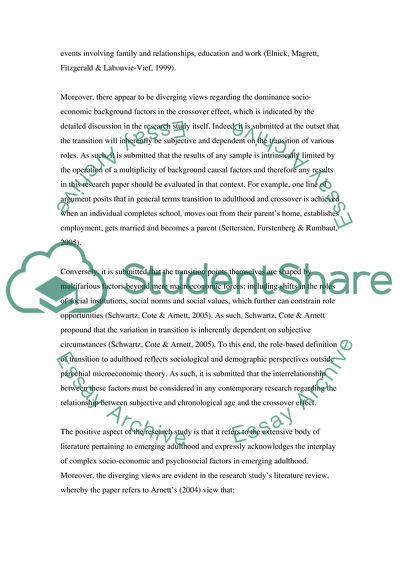Cite this document
(Analysis of Chronological and Subjective Age in Emerging Adulthood: Research Paper, n.d.)
Analysis of Chronological and Subjective Age in Emerging Adulthood: Research Paper. Retrieved from https://studentshare.org/social-science/1719901-analyse-the-rsearch-paper-chronological-and-subjective-age-in-emerging-adulthoodthe-crossover-effect-by-nancy-l-galambos-pamela-k-turner-and-lauree-c-tilton-weaver-journal-of-adolescent-rsearch-2005-20-538
Analysis of Chronological and Subjective Age in Emerging Adulthood: Research Paper. Retrieved from https://studentshare.org/social-science/1719901-analyse-the-rsearch-paper-chronological-and-subjective-age-in-emerging-adulthoodthe-crossover-effect-by-nancy-l-galambos-pamela-k-turner-and-lauree-c-tilton-weaver-journal-of-adolescent-rsearch-2005-20-538
(Analysis of Chronological and Subjective Age in Emerging Adulthood: Research Paper)
Analysis of Chronological and Subjective Age in Emerging Adulthood: Research Paper. https://studentshare.org/social-science/1719901-analyse-the-rsearch-paper-chronological-and-subjective-age-in-emerging-adulthoodthe-crossover-effect-by-nancy-l-galambos-pamela-k-turner-and-lauree-c-tilton-weaver-journal-of-adolescent-rsearch-2005-20-538.
Analysis of Chronological and Subjective Age in Emerging Adulthood: Research Paper. https://studentshare.org/social-science/1719901-analyse-the-rsearch-paper-chronological-and-subjective-age-in-emerging-adulthoodthe-crossover-effect-by-nancy-l-galambos-pamela-k-turner-and-lauree-c-tilton-weaver-journal-of-adolescent-rsearch-2005-20-538.
“Analysis of Chronological and Subjective Age in Emerging Adulthood: Research Paper”, n.d. https://studentshare.org/social-science/1719901-analyse-the-rsearch-paper-chronological-and-subjective-age-in-emerging-adulthoodthe-crossover-effect-by-nancy-l-galambos-pamela-k-turner-and-lauree-c-tilton-weaver-journal-of-adolescent-rsearch-2005-20-538.


